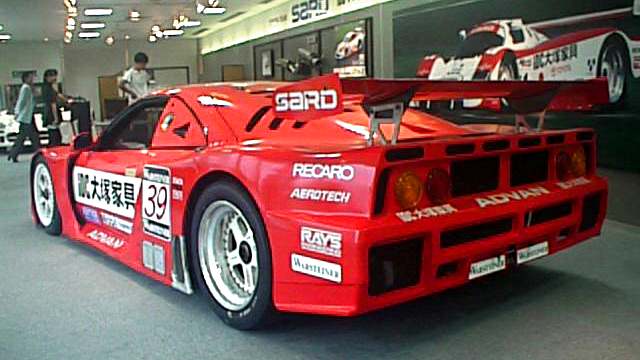When a vehicle moves, it takes up physical space, and that travels through matter (air, in this case). Assuming that air isn't going anywhere, the car's body has to direct the air around or through the vehicle. The more effectively it can do this, the less wind resistance a vehicle has, which has a number of benefits that increase as speed increases. The overall effect of the air travelling around the vehicle is called aerodynamics.
Focus on Aerodynamics by Ferrari
Downforce
Using the wind to push the vehicle down while in motion is referred to as downforce, which is often increased by additional body components, which include wings & spoilers, air dams, underbody components, and even overall body reworking. Downforce often creates drag, making its use a trade-off between the two effects. When a vehicle travels at high speed, it creates a slipstream, or pocket of air behind it which is, in simple terms, air being pulled behind that vehicle, which can be used by a vehicle behind it to reduce drag (because it the air is moving in the same direction, which is like driving through still air at a lower speed). Some refer to this driving technique as drafting, a term often used in forms of racing where the technique is important.
Formula 1 Front Wing Explained
Jason Fenske of Engineering Explained explains the design of Formula 1 front wings.
Car designers can study how the air flows around a car using a wind tunnel, which blows air over a car that isn't going anywhere. They can also measure turbulence while on a test track by attaching strips of cloth (or other thin, flat material) to the body, and observing how much the material sticks to the vehicle (if the material sticks, that means there is little turbulence, which is a good sign).
Drag
Aerodynamic drag, sometimes called wind resistance, is an effect which a vehicle must overcome more and more as speed increases. Drag is a form of friction, though some of the air's effect on the vehicle is due to a low pressure zone behind the vehicle, and a high pressure zone in front. Some high-end racing cars greatly reduce this effect by reducing the amount of vertical flat surfaces, like the bumpers on standard public cars, which reduces front-end air pressure, and often generates downforce as well.
Front & Rear Pressure Zones
As a vehicle travels at high speed, air has to find its way around that vehicle. In most vehicles on the road today, the front and rear areas have unusually high or low pressure areas which hinder the car's performance at highway speed and above. These zones could be eliminated by having pointier noses and more sloped rear body sections.
Front High Pressure Zone
As the air first meets the front of the car, the relatively flat nose of the car creates a need for the air to quickly change direction. Air resists this in the form of increased pressure. Because the air has to be forced out of the way by the engine's power and vehicle's momentum, the high pressure area in front of the car resists the overall movement of the vehicle.
Rear Low Pressure Zone

There is a low-pressure pocket of air which is found behind a vehicle moving at high speed. This low pressure resists the vehicle's forward momentum and the engine's power in the opposite way the front pressure zone does.
The SARD race car to the right has openings in the back to reduce the effect of the rear pressure zone, in addition to weight reduction. Having a strong low pressure zone aids in aerodynamic stability when other factors are not enough, but other means of achieving stability are preferred and more effective.
Front & Rear Pressure Reduction
Many racing vehicles throughout the years have been designed in a way that greatly reduces the size of the front and rear pressure zones. This is done by reducing the vehicle's size, keeping the front bumper pointy, keeping the rear bumper's surface area small, reducing the cockpit size, and other less-notable features.
Shark Fins (video by KYLE.ENGINEERS)
A "shark fin" is a flat, straight panel found on the top rear portion of some forms of race cars. This video was published June 13th, 2016.
